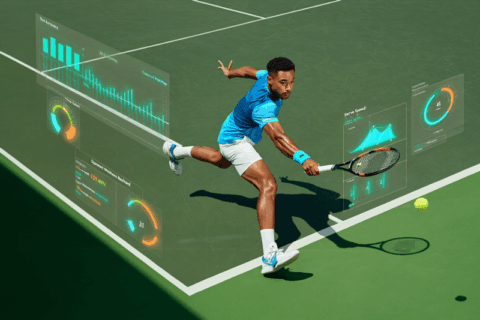
HeadtoHead Stats Reading Tips to Boost Betting Skills
In the competitive world of sports betting, understanding how teams or players perform against each other is crucial. Head-to-head (H2H) statistics are a goldmine of insights, revealing patterns, strengths, and weaknesses that aren’t always obvious from raw game data. For bettors aiming to up their game, learning how to interpret these matchup data confidently can significantly increase the accuracy of predictions and improve overall betting success.
This guide provides expert tips on reading head-to-head stats like a seasoned analyst. We’ll explore key metrics, common trends, and practical techniques to help you make smarter, data-driven betting decisions.
What Are Head-to-Head (H2H) Statistics?
Head-to-head stats record the outcomes of previous encounters between two teams or players. These data points include wins, losses, draws, goal differences, and other performance metrics specific to each matchup.
Importance of H2H data:
- Reveals matchup-specific performance.
- Highlights historical trends that influence future results.
- Provides context that standard season stats may overlook.
Key Metrics to Focus On When Analyzing H2H Data
1. Win-Loss Records
Why it matters: The most straightforward indicator, revealing which team historically dominates the matchup.
How to interpret:
- Look for consistent win patterns over various periods.
- Consider recent form within the H2H context—recent matchups often carry more weight than older ones.
2. Goals Scored and Conceded
Tracking goal data:
- Goals scored by each side in previous encounters can indicate offensive strength.
- Goals conceded reveal defensive vulnerabilities.
Analytical tip: Analyze goal margins—narrow margins suggest closely contested matches, while large discrepancies may indicate dominance.
3. Match Location Effect
Home vs. Away performance:
- Some teams perform significantly better at home.
- Historical H2H results might skew if most matches were played at home or away.
Action point: Adjust expectations based on the location of upcoming matches.
4. Recent Trends and Momentum
Why they matter: Player form and team dynamics change over time. Recent H2H match outcomes are often more relevant than older data.
Tip: Focus on last 3-5 encounters to gauge current form and psychological edge.
5. Contextual Data and External Factors
- Player injuries or suspensions affecting the upcoming match.
- Tactical changes based on previous encounters.
- Weather conditions influencing playing style.
Practical tip: Combine H2H stats with current team news for a comprehensive analysis.
How to Interpret Trends in Head-to-Head Data
Recognize Patterns and Outliers
- Consistent Winners: Teams with a history of success may have a psychological edge.
- Unusual Fluctuations: Sudden changes in results could signal underlying shifts like tactical adjustments.
Identify Situational Factors
- Clutch Performers: Certain players or tactics shine in specific matchups.
- Motivational Factors: Rivalry intensity or stakes (like playoffs) can influence results.
Expert insight: Always contextualize raw data with qualitative insights to understand when a trend might break.
Practical Techniques for Betters
1. Use Charting and Visualization Tools
Create trend lines or heat maps of H2H results over time to identify consistent patterns visually.
2. Cross-Reference with Other Data Sources
Combine H2H stats with:
- Overall season performance.
- Player availability.
- Psychological aspects or recent news.
3. Focus on Key Matchups
Identify specific matchups within the team dynamics that could influence outcomes—for example, a star defender consistently neutralizing an opposing forward.
Common Mistakes to Avoid
| Mistake | Explanation |
| Overemphasizing Old Data | Older results may no longer reflect current team form or tactical approaches. |
| Ignoring External Factors | External influences like injuries or schedule congestion can skew results. |
| Blindly Trusting Win Records | A high win percentage might be skewed by small sample sizes or favorable conditions. |
Frequently Asked Questions (FAQs)
How far back should I analyze H2H data?
Focus primarily on recent 3-5 matches for current relevance. However, for historical dominance trends, reviewing up to 10-15 outings can be informative.
Can H2H stats predict exact scores?
While they provide context, exact score predictions remain uncertain. Use them to gauge likely outcomes rather than precise scores.
Are H2H stats more useful for certain sports?
Yes, sports with frequent head-to-head encounters like football, tennis, or basketball benefit most from detailed H2H analysis.
Mastering the art of reading head-to-head statistics transforms raw data into actionable insights. By focusing on critical metrics, recognizing patterns, and contextualizing trends, you develop the analytical skills necessary for smarter betting decisions. Remember, combining quantitative data with qualitative context is the hallmark of a professional analyst.
Start integrating these techniques into your betting routine today, and watch your confidence—and success—grow.
Take Action Now: Download our free cheat sheet on H2H stats interpretation and step up your sports betting strategy!


